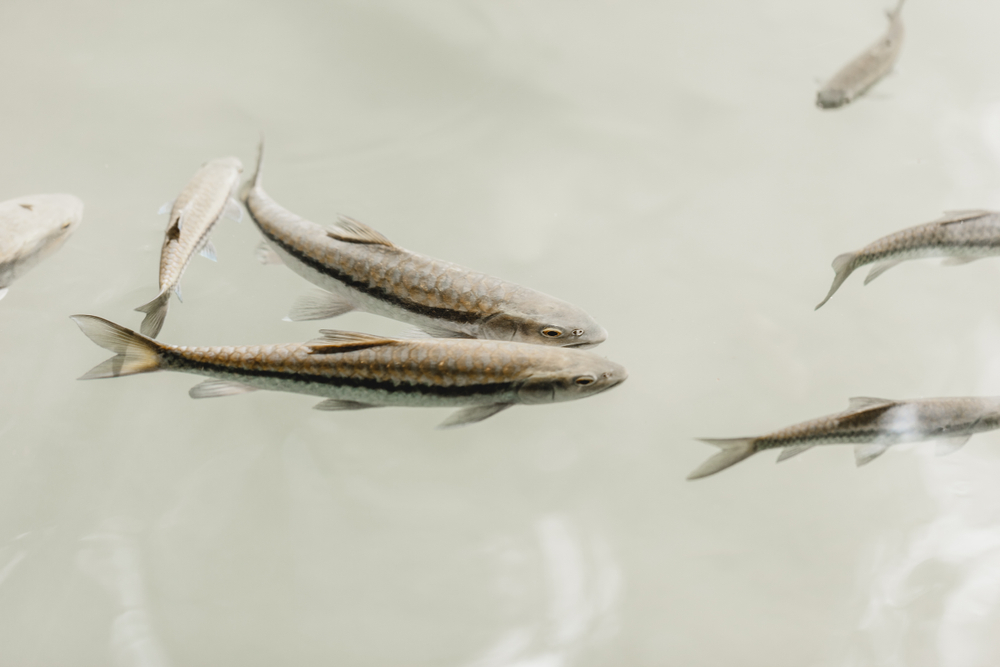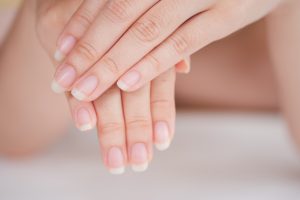Beauty comes with a price, whether it’s money or health risks. Fish, in particular, aren’t considered just food anymore as many people use various forms of fish for pedicures.
No, you read it correctly! The Garra rufa fish, commonly called pukka fish, is a dangerous fish often used during pedicures.
Why are pukka fish dangerous?
It has been shown that Garra rufa (pukka) fish carry antibiotic-resistant forms of bacteria, notably Streptococcus agalactiae, and could infect humans.
This research, conducted by British Scientists, has led to fish pedicures being banned in many places.
Table of Contents
Why do pukka fish eat dead skin?
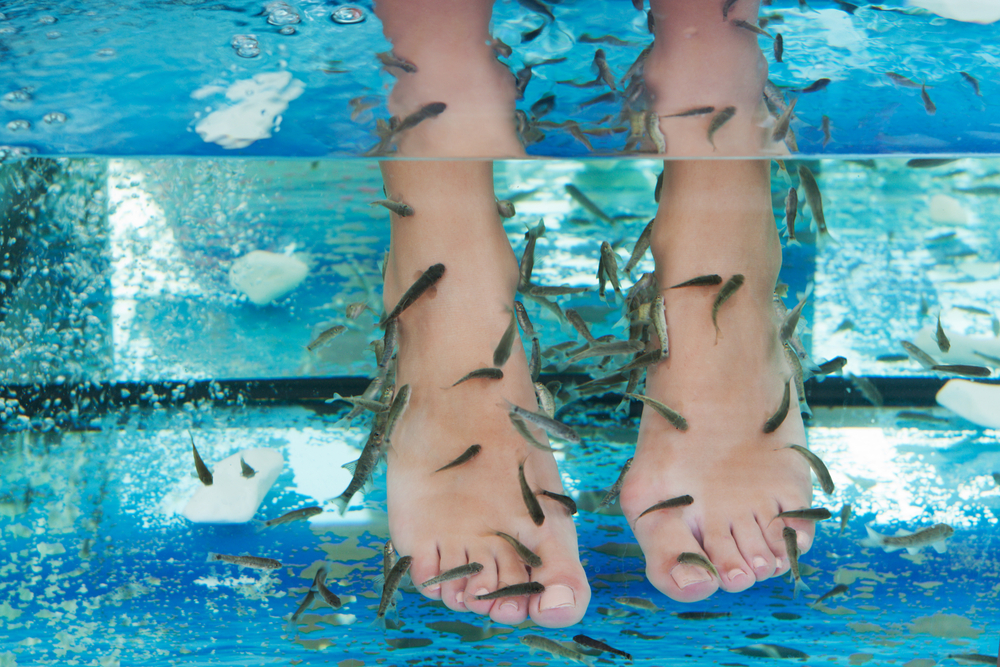
This may come as a surprise, but Garra rufa fish don’t like to consume dead skin. Nibbling human skin is a desperate attempt for these famished fish to get food.
Clients getting fish spa treatments might be at risk for skin as well as soft tissue diseases brought on by the bacteria carried by these small-toothed carp that peck away at the flaky, calloused skin on their feet.
Are pukka fish dangerous to the environment?
Environmental issues are of great importance. Since these fish aren’t indigenous to the US and might potentially harm local flora and fauna, the US Fish and Wildlife Service advises against releasing Garra rufa into the outdoors.
Are fish pedicures a modern trend?
No! Fish pedicures have been around for eons. Many countries around the world even have Dr. Fish spa facilities.
Dr. Fish spa resorts launched in 2006, using fish to clean spa bathers in Kangal, Turkey; Hakone, Japan; and Umag, Croatia.
In Alexandria, Virginia, and Milwaukee, Wisconsin, two well-known Dr. Fish pedicure facilities started in 2008.
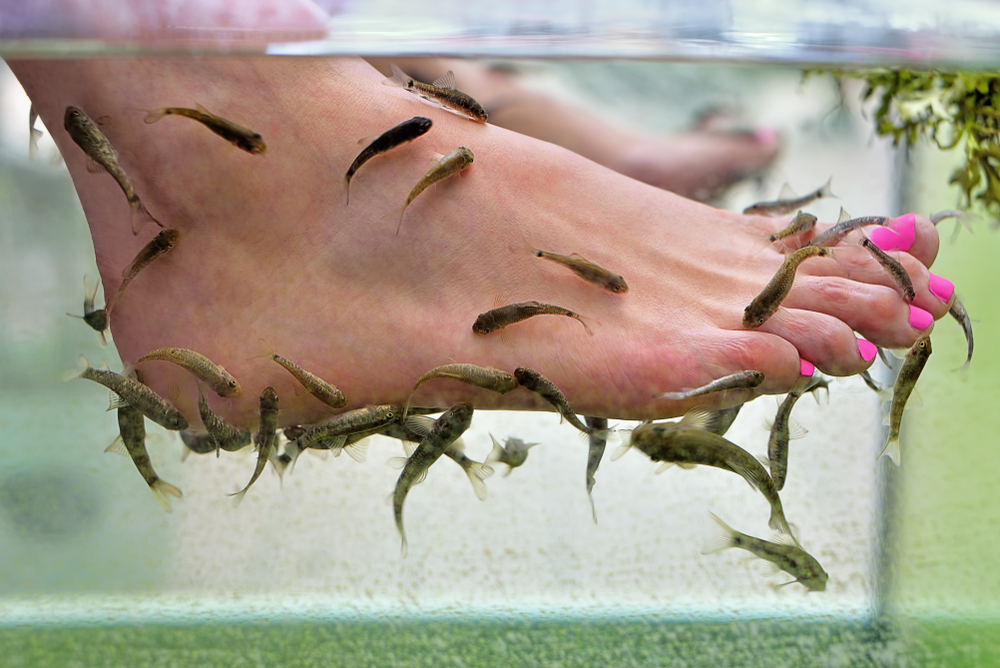
Shortly after it opened, the doctor fish service in Wisconsin was shut down by executive order.
The first spa in the U.K. debuted in Sheffield in 2010. The UK Health Protection Agency published a report in 2011 stating that the technique had an “extremely minimal” danger of transmitting infections.
Which countries have banned pukka fish?
The Wall Street Journal reports that the pukka fish technique has been banned in numerous states in the U.S. as well as Canadian provinces because cosmetology officials believe it is unhygienic. Every time a tool is used in a salon, it must be thrown or cleaned.
According to PETA, an animal rights group that rejects all human use of wildlife, the fish are deprived of proper treatment and therefore compelled to eat an aberrant diet.
Garra rufa, commonly found in spas and aquariums, comes primarily from Israel, with a small number also coming from Turkey.
G. rufa is now identified as G. jordan as well as G. turcica throughout Israel and several (though not all) Turkish communities, raising doubts about the real identity of most fish observed in the trade.
Which country legally protects pukka fish?
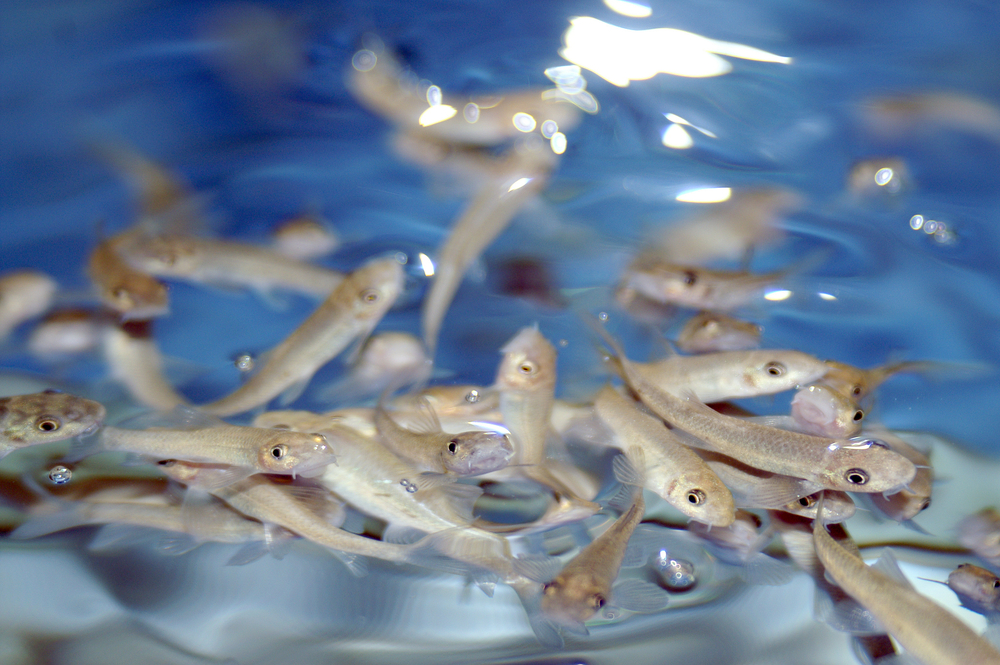
This species is protected by law in Turkey because of worries about overharvesting. No matter how hard it tries, this species can’t live in stagnant or polluted water.
It needs a constant flow of fresh air to thrive.
Aquarium species are not well-suited for treating skin ailments since skin-feeding activity appears only in settings where access to food can be sparse and uncertain.
The feasibility and legitimacy of using fish for a spa treatment for the general public are still hotly discussed topics.
Are pukka fish a threat?
After a facility in Alexandria, Virginia, introduced the fish pedicures to the United States in 2008 as an alternative to blades, the danger has stayed essentially speculative.
In the first few months of the operation, over 6,000 people came to the spa for a fish pedi.
A fish pedicure is not recommended for those with open wounds, skin injuries, or other medical conditions, according to health experts in the United States and the United Kingdom.
Lead author David W. Verner-Jeffreys emphasized that “the UK Health Protection Authority deems the risks to human health to be somewhat minimal and doesn’t want people to get overly troubled by our findings” in a press release.
Are people bathing with waste at fish spas?
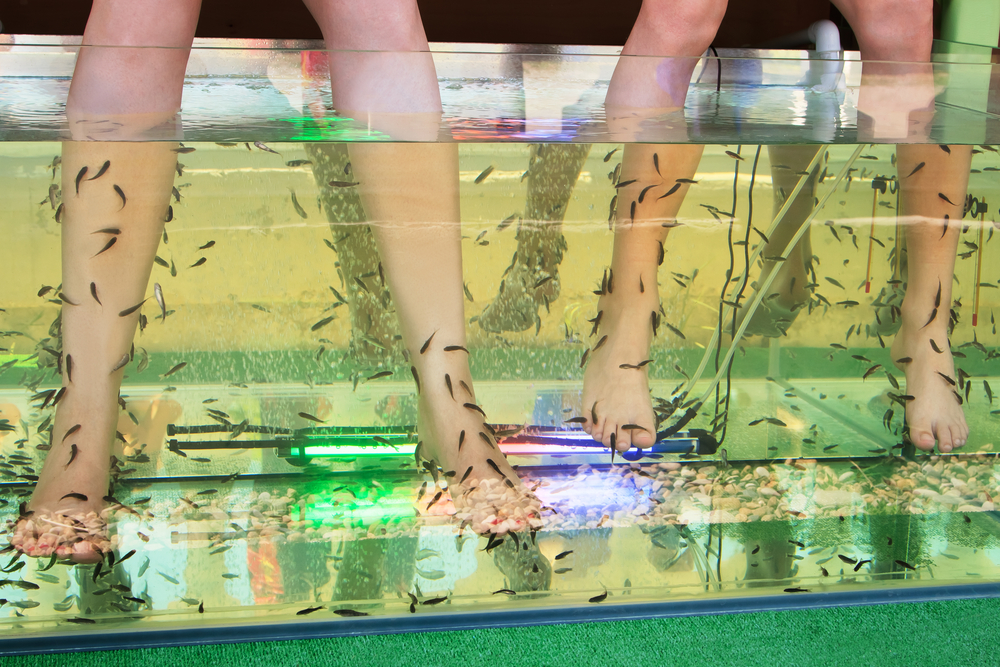
In what is known as ichthyotherapy, there still is the ick component: fish are living animals that excrete waste items into the water in which humans soak.
Research into the germs that could be washing fish spa users’ feet started in April 2011, when British officials launched an investigation into a purported bacterial incident involving 6,000 Garra rufa fish transported there from Indonesia.
What have tests revealed about the dangers of pukka fish?
A bacteria called Streptococcus agalactiae was found to be present in the fish. This bacterium is known to cause pneumonia, severe bone, joint, as well as blood infections, and even life-threatening illnesses in infants.
Fish examiners from the British government traveled to Heathrow Airport in London in 2011 and seized batches of the inch-long silver freshwater fish from Indonesia.
These bacteria, such as A. Agalactiae, Vibrio Cholerae, and Vibrio vulnificus, were found in the fish samples collected and tested.
According to Verner-Jeffreys, an aquaculture health specialist at the Center for Environment, Fisheries and Aquaculture Science, the strains were immune to numerous crucial antimicrobial treatments, comprising aminoglycosides and tetracyclines.
Have there been any reports of illnesses due to fish spas in the U.S.?
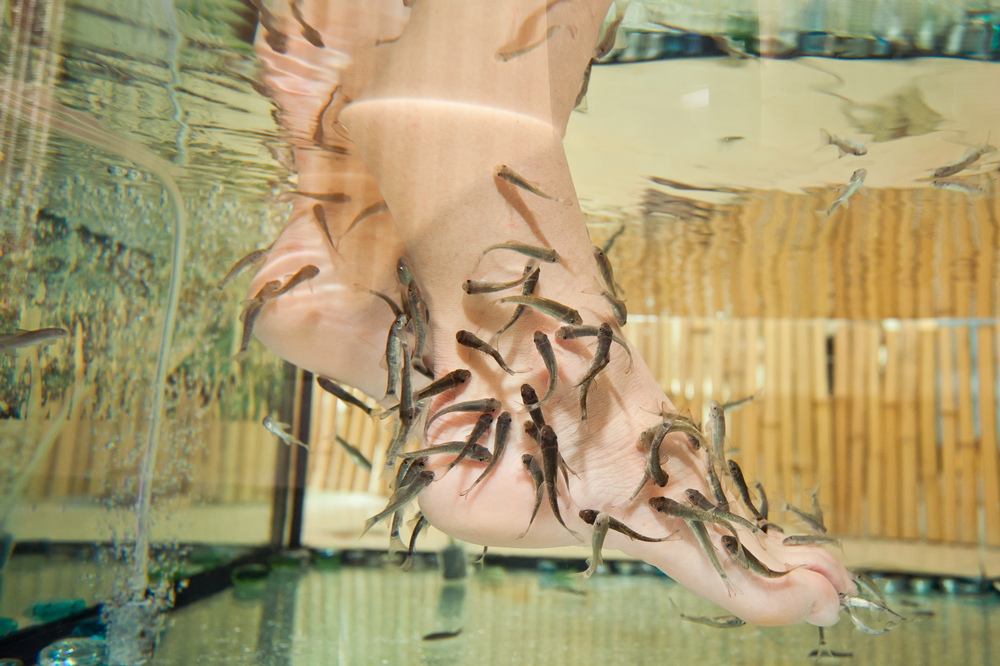
There haven’t been any reported cases of disease from fish pedicures in the U.S., according to the CDC as of 2011.
Clients have complained of scarring and blistering after using fish-free footbath in nail salons.
Those have been linked to outbreaks of nontuberculous infections such as those caused by the bacteria Mycobacterium absces and M. fortuitum.
Where are pukka fish mainly found?
It is common to find this type of fish in the countries of Turkey, Syria, Iraq, and Iran.
To counteract overfishing and abuse, the Turkish government was forced to institute legislative safeguards for Garra rufa throughout the nation.
What is so dangerous about transporting pukka fish?
Garra rufa can be purchased through mail order, but they are supplied in water-filled plastic containers.
A lot of fish die in the process of traveling. It is common for new arrivals to be thrown into aquariums, dead or alive.
Why are fish spas outlawed in the United Kingdom?

It’s not just the U.K., many places in the United States, Canada, and Europe have outlawed fish pedicures due to the health concerns and animal cruelty involved in these services.
Is it a bad idea to get a fish pedicure?
Proponents claim that fish reduce calluses, lighten dark cuticles, and enhance circulation. The risks to human and fish health outweigh any potential benefits, according to scientists.
Because of this, fish pedicures have been outlawed in 10 states in the United States and Mexico, as well as in certain European countries.
Are fish pedicures painful?
This therapy has grown in popularity because of the fish’s ability to gently exfoliate and soften the feet.
The fish pedicure is a bit itchy, but it’s not painful. Most people who get fish pedicures simply say they tickle.
Does hepatitis spread through contact with pukka fish?
According to a story in The Sun, popular fish pedicures may be a vector for the transmission of HIV and hepatitis C.
The therapy, which is popular in beauty spas and involves the nibbling away of hard foot skin with small fish, has prompted worries among officials, according to a piece on the front page of the paper.
Are fish pedicures safe to get?
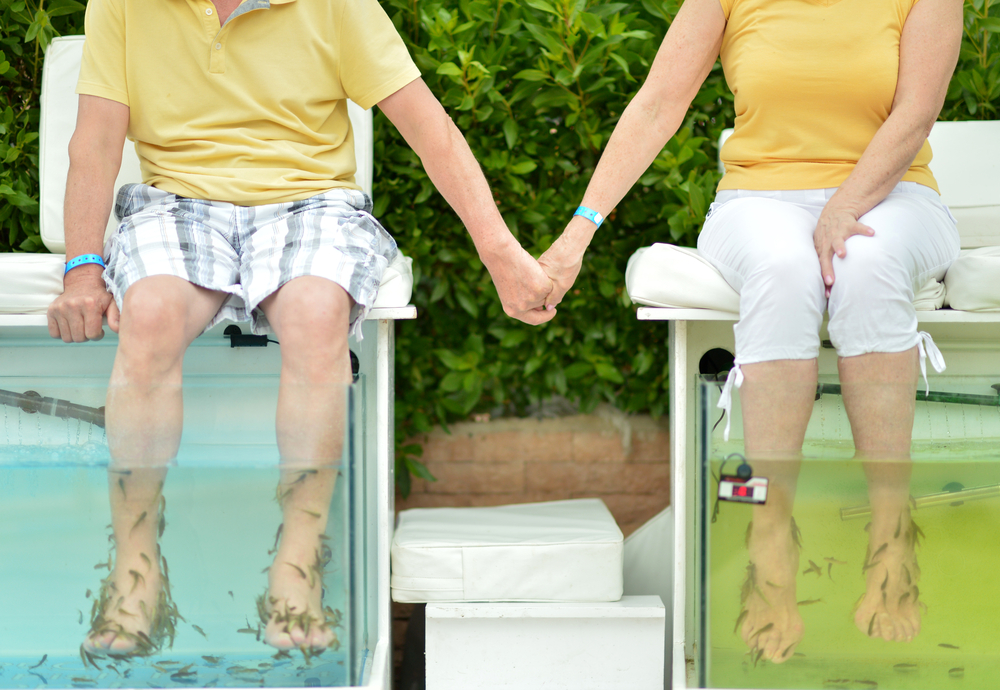
With fish inside, basins can’t be adequately disinfected and cleaned, according to experts at the CDC.
The fish are frequently reused, which means that the same fish is used for several pedicures.
Fish pedicures are particularly harsh since the fish are routinely starved to force them into eating during the procedure.
There have been reports that health officials are looking into the possibility that fish pedicures could spread infectious diseases.
What is the right way to care for Garra rufa fish?
When swimming in a filter output or powerhead, these fish will often swim upstream against the flow because they like water with a high concentration of oxygen.
To keep these fish happy and healthy, you’ll need a lot of fast-moving water. It is also important to have a tight tank lid or covering since that fish is a proficient jumper and climber.
How can you remove the dead skin cells from your feet?
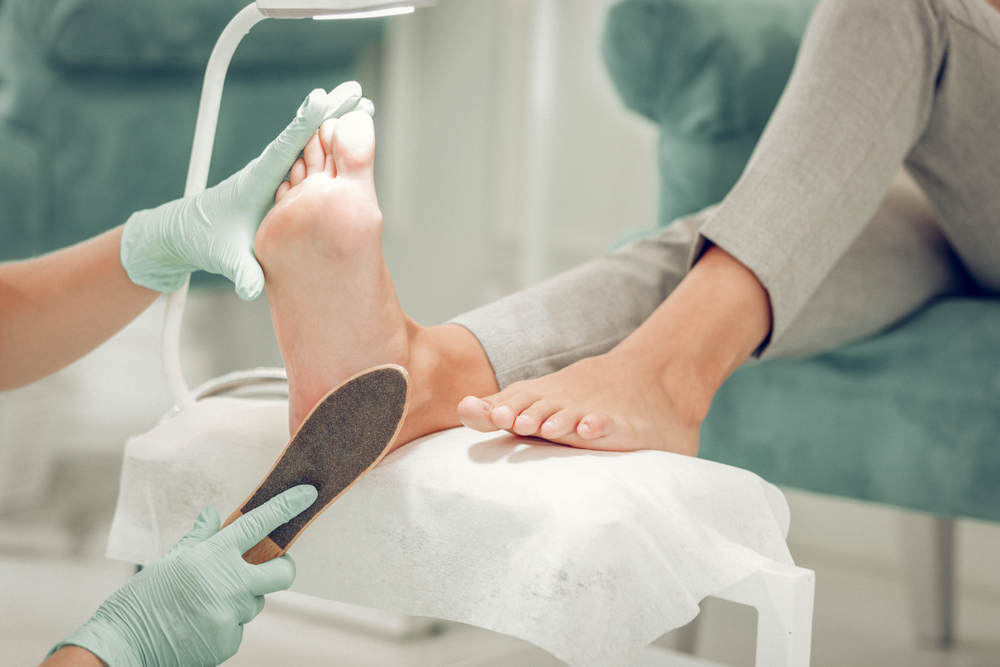
To remove the dead skin cells from your feet, take a look at the steps below:
- To soften the dead skin on the feet, soak them in warm water.
- Use a warm water-soaked pumice stone or foot file to scrub your feet.
- Make sure your feet are clean.
- Using a clean towel, dry the feet thoroughly.
How do you remove dead skin cells with no pumice?
Blend a scoop of Epsom salt with a tbsp of bath or olive oil on either a loofah in the shower or bath to make an Epsom salt exfoliation for feet.
Gently massage, moisturize, and exfoliate using a gentle rubbing motion over damp skin, and then rinse well with warm water.
What’s the connection between pukka fish and psoriasis?
It all started in Kangal, a little Turkish town. It became popular with psoriasis sufferers after they discovered that the Garra rufa fish organically removed the scales while preserving the rest of the skin.
Initially, scientists conducted several modest studies that found positive outcomes in the management of psoriasis linked to the use of the fish, which spread quickly.
The Psoriasis Area Severity Index (PASI) grade was reduced by 72 percent inside a three-week trial of 67 participants with no adverse effects.
After only three weeks of treatment, a larger trial of 87 individuals found similar results, with extended remission times and significant improvements.
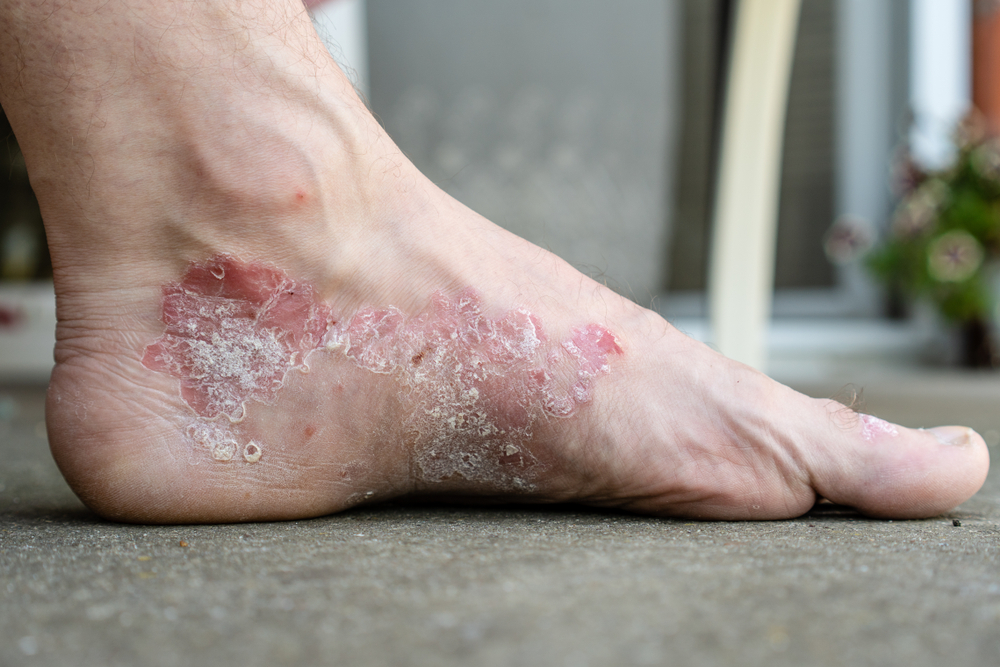
What is the CDC’s view on fish treatment for psoriasis?
Psoriasis patients may benefit from Garra rufa fish treatments, according to the findings of a recent study.
The CDC, on the other hand, cautions that this is only true if the fish are utilized in their natural habitat or a healthcare setting underneath the observation of a dermatologist, and never in a spa.

